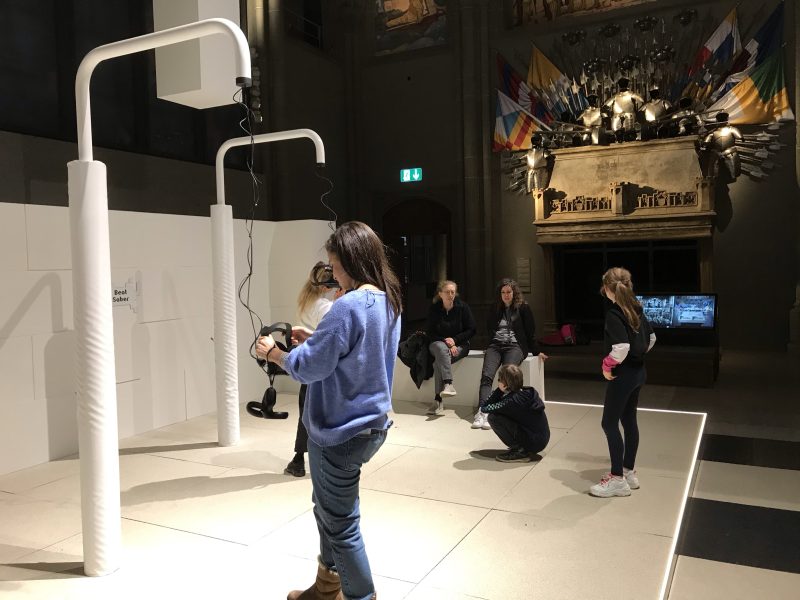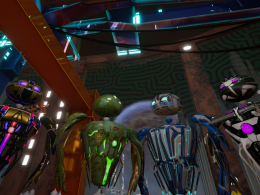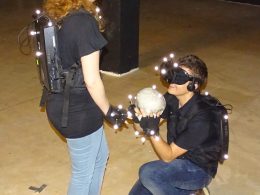With the exhibition "Games" to bring video games closer to the general public. We paid a visit and got an impression of it.
Is the announced "Games" exhibition at the Landesmuseum suitable for a team event with young IT employees in particular? The idea at least seemed good and so we booked the VR start-up HEGIAS a guided tour.
Right at the beginning, we were told that the tour would only last about 30 minutes and that the rest of the hour was reserved for trying out. Why you would then book and pay for an hour-long tour is a bit of a mystery, but oh well. During the entertaining tour, we learnt some interesting facts about the subject in the Hall of Fame.
Every 3rd person plays games
Most of these facts can probably also be found on the interactive panels, which provide information on the developments of the respective time in just a few sentences. For example, you learn that 2.5 billion people worldwide regularly play video games and that this figure would probably be even higher if everyone had access. The genders are now on an equal footing again. The market for games is now larger than that of music and film combined.
An incomplete journey through history
In addition to information, there was of course also "hardware". We started with the 1970s, where you could try out the classic "Pong", a table tennis simulation game released in 1972. We moved on to the arcade game "Space Invaders", which was released in 1978 and which you can experience on an original slot machine. If you want to immerse yourself in the video game world of the 1990s, you can do so with a game of "Counter Strike" on a tube screen. In the 2000s room, the bathtub and toilet from "Sims" catch the eye and "Minecraft" also shows that imagination and design also have their place in gaming.
The journey ends today, in the 2010s: Here, VR goggles immerse you completely in virtual reality, for example in the game "Beat Saber" or in "Job Simulator". Three well-attended VR stations were suspended from shower-like posts in a white room.
The HEGIAS team remained somewhat unimpressed. It was obvious that none of the VR cracks were testing these games The exhibition is very small and there are crucial points missing. Where are the small game consoles from the 90s, on which you could only play a single game? What about the development of the mobile phone? Where is AR with, for example, the global hit Pokémon Go?
An answer to the last question can be found in an NZZ report: "Gaming on mobile devices was deliberately omitted, as technical access would have been difficult, for example due to theft," explains the National Museum. In addition, the museum wanted to focus on virtual reality in the 2010s, which many visitors would not be familiar with, in contrast to playing on mobile devices.
All in all, the exhibition was rather disappointing, even if it did provide some exciting facts.
Source: NZZ









